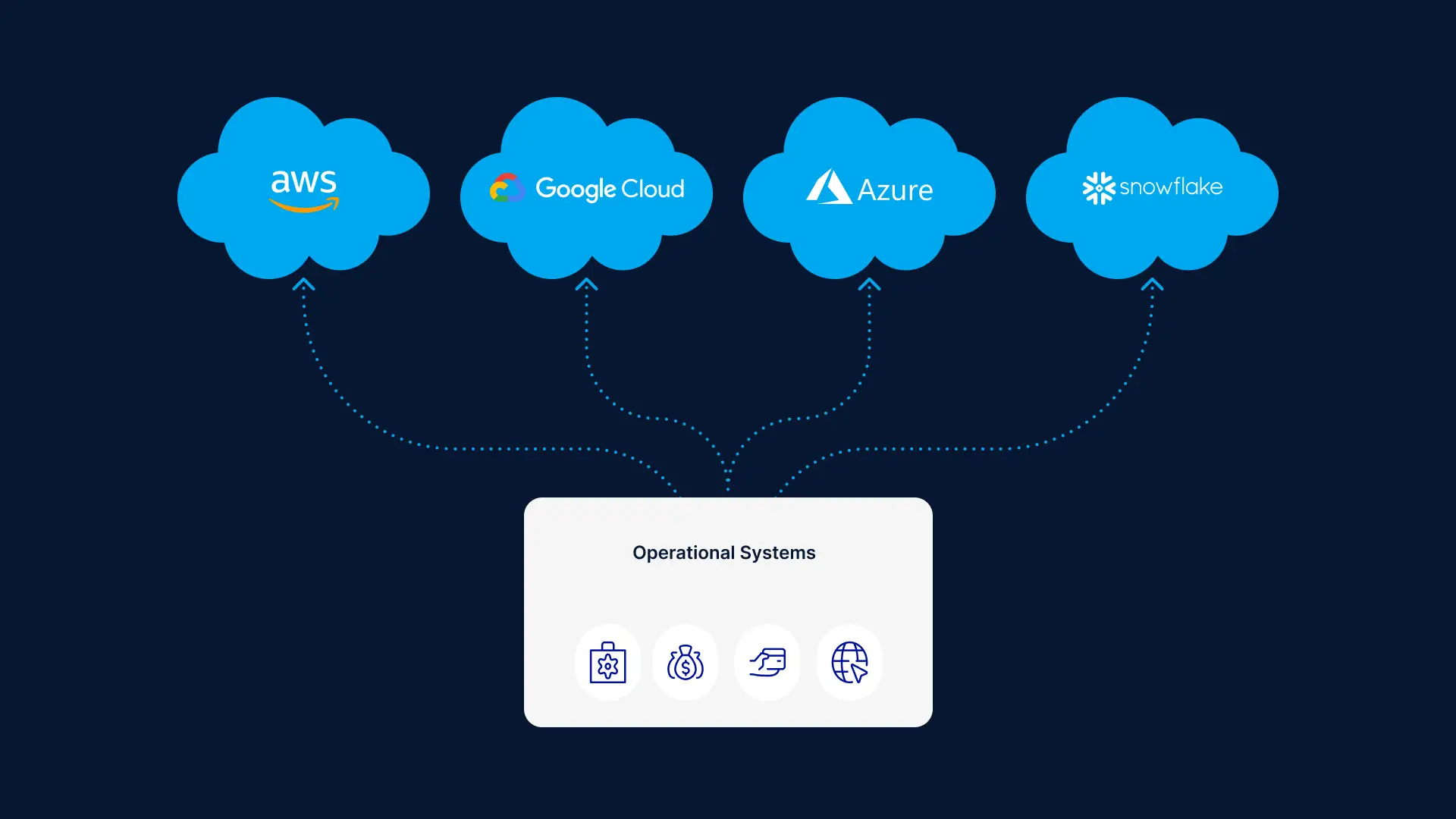Using two or more public cloud providers has become almost a norm over the past few years. Gartner predicts that over 75% of midsized and large companies will deploy a multi-cloud and/or hybrid IT strategy by 2021. A multi-cloud strategy enables companies to use the best possible cloud for specific tasks and to more effectively store, compute, and analyze data.
But from security concerns to data integration needs, using multiple clouds is riddled with challenges. To help companies execute their IT initiatives, we’ll examine different aspects of a multi-cloud strategy and data integration in a multi-cloud environment.
What is a multi-cloud strategy
A multi-cloud strategy involves using multiple cloud providers to host data, run apps, build infrastructure, and deliver IT services. Multi-cloud typically means using more than one of the big three cloud providers (Amazon Web Services, Microsoft Azure, and Google Cloud), as well as other, smaller providers. Users can deploy both public and private clouds.
The end goal is to have providers play to their strengths. A company may find, for instance, that a specific cloud platform is more suitable for bare metal compute in the cloud, another is stronger for cloud data warehousing, while another platform is better equipped to handle machine learning. Using several clouds to handle different workloads has become the best practice for many companies.
Cloud vendors are well aware of the rise of multi-cloud, and they adjust their products accordingly. Google, for instance, now offers BigQuery Omni, a multi-cloud version of its popular analytics tool. Users of this software can now connect to their data stored on Google Cloud, AWS, and Azure without moving or copying data sets.
What is the difference between hybrid cloud versus multi-cloud
Multi-cloud sometimes gets confused with hybrid cloud. Multi-cloud means using multiple cloud providers, while hybrid cloud is about combining various cloud and on-premises systems.
Think of multi-cloud as a strategy for gaining efficiency through using public and private clouds from different cloud vendors. Companies opt for this approach to meet specific technical or business requirements.
And think of hybrid cloud as infrastructure that consists of on-premises servers, private clouds, and public clouds. For instance, Hess Corporation, an energy business, is using hybrid cloud. The company has migrated its IT infrastructure to the AWS Cloud but runs parts of its core businesses using on-premises systems.
How a multi-cloud strategy elevates your data game
Adopting a multi-cloud strategy elevates your data game by enabling your IT team to accomplish the following:
1. Increase productivity: Using top resources from various cloud vendors allows you to be more productive. One vendor could efficiently handle your large data transfers, while the other could excel in deep learning capabilities.
2. Increase flexibility: Apart from productivity, working with different cloud providers offers more flexibility. IT teams could face unique challenges when deploying certain apps and may need to use AWS to store data and Azure for data processing. Having access to multiple clouds makes this possible.
3. Cut costs: Companies can move their workloads between different cloud applications and take advantage of dynamic pricing. Having nodes in several clouds thus helps organizations to cut cloud costs.
4. Avoid vendor lock-in: A multi-cloud strategy ensures companies aren’t tied to a single cloud provider and its protocols, proprietary systems, and pricing. Companies can avoid costly lock-ins and explore other providers when needed.
5. Recover from disasters: If your primary cloud fails, you can move data, workflows, and systems to a backup cloud. A multi-cloud strategy is a failover solution that ensures that your mission-critical apps are always available.
6. Improve response time: Working with multiple cloud vendors allows companies to store data in data centers closest to their customers. Such proximity to end-users reduces latency and improves the response times of cloud services.
7. Comply with laws: Data privacy and governance regulations, such as the General Data Protection Regulation (GDPR), often require that sensitive data be held in specific jurisdictions. A multi-cloud strategy provides companies with different options on where to store their data.
Challenges of a multi-cloud strategy
Using a multi-cloud strategy to increase the value of your cloud environments requires overcoming the following challenges:
1. Architectural complexity: Migrating to a multi-cloud environment typically requires making changes to data architecture, particularly if an organization has vast on-premises architecture.
2. Extra agility: A multi-cloud strategy may offer more flexibility, but IT teams need to be extra agile with managing nodes in multiple cloud applications and shifting between them when required.
3. Security concerns: Managing and moving data in various clouds require that organizations defend a wider attack surface and deal with more security threats.
4. Data governance: Regulations such as the GDPR hold both users and providers of cloud services accountable for privacy breaches. A multi-cloud strategy means organizations are responsible for data governance in multiple clouds.
Key considerations when choosing a multi-cloud integration platform
Integrating data, apps, and other assets in a multi-cloud environment requires the use of integration platforms. When deciding on which platform to use, make sure it can
- work with on-premises and cloud systems;
- transform data into a consumable format;
- manage and monitor data streams in a single console; and
- deliver data to multiple cloud targets without needing separate integration apps.
Without multi-cloud integration, each cloud will become siloed. Data sharing will be limited, and organizations won’t get value from their data.
The importance of a robust data integration platform thus can’t be overstated. It allows companies the flexibility to use new cloud solutions without manually setting up point-to-point integrations. On top of that, change data capture can be used to sync data across clouds in near real-time. Monitoring data in a single console helps data teams manage a complex IT environment more easily, while having a single solution for extracting data simplifies integration architecture complexity.
Extracting more value from data
A multi-cloud strategy is a default option for many midsized and large companies. Working with multiple cloud vendors enables businesses to use the best possible solution for different workloads. Data teams can be more productive and flexible. As a result, companies get more value from their data and are more likely to achieve a competitive advantage.























